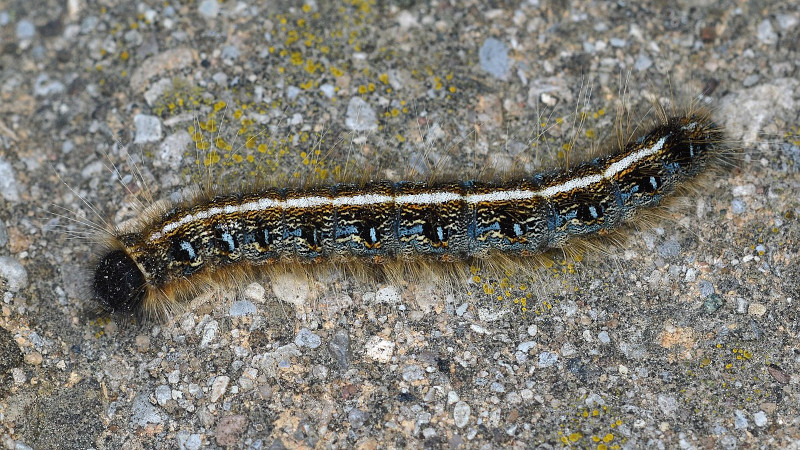The adorable (look at that fuzzy physique) Eastern Tent Caterpillar represents the caterpillar form of a lappet moth species, also known as a tent caterpillar.
Despite their adorable appearance, many agriculturalists consider this insect a pest. This is due to the fact that their voracious appetite will leave ornamental trees temporarily defoliated.
The Eastern Tent Caterpillar almost exclusively inhabits fruit trees, such as apple or cherry. This beautiful insect has a univoltine nature, producing a single generation per year.
Eastern Tent Caterpillar Physical Characteristics
The Eastern Tent Caterpillar is a multicolored species. They display a color combination including white, black, blue, and orange.
Their bodies display a covering of numerous small, white hairs, which makes them extremely soft to the touch. These are also the source of the white and blue colors, given that microtubules on the cuticles serve to filter light.
The Eastern Tent Caterpillar produces a fine silk, which they deposit wherever they travel (how cool is that?). They will use this silk to spin a cocoon in the last stage of their life as an imago. While in their larval stages, they possess voracious appetites.
Eastern Tent Caterpillar Distribution and Ecology
The Eastern Tent Caterpillar is endemic to the eastern portions of the United States. They primarily inhabit forest regions but will populate inhabited regions, including city parks.
Unique among most insects, they form communal cocoons (sociable little things). These may contain as many as several hundred caterpillars.
They will emerge from their communal cocoon three times per day, en masse, to feed. They have few natural predators, other than cuckoos. This is because the cherry leaves which form the major part of their diet are actually cyanogenic.
The Eastern Tent Caterpillar will actually regurgitate juices laced with cyanide (that’s right, cyanide) when disturbed.
Check out our other articles on 5 Magnificent Reptiles of Mexico, Eurasian Red Squirrel, Lake Maracaibo, American Tiger Lily, Southern Stingray, Eastern Yellowjacket, Black Caiman

